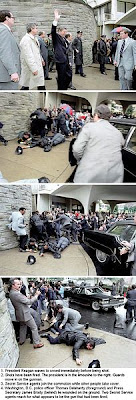We
interviewed a man who was there the night of the bombing in the night club in
Berlin. The man’s name is Marlin Tain. He luckily survived the horrible bombing
that happened because the Libyan terrorists bombed the night club in Berlin.
The
questions we asked him:
Q: “What
were your reactions to the night of the bombing?”
A: “I was so
shocked and this explosion came from nowhere. I was having a great time talking
with one of my old friends when suddenly a huge noise came from across the building.
It was horrible trying to escape the building; so many dead bodies, so much
smoke.”
Q: “How has
your life changed since then?”
A: “I looked
at life differently after that night because things happened so quickly and I
am forever grateful that I was able to escape that night.”
Q: “Compare
that night to a surprised bombing from a powerful country?”
A: “Although
I have not been involved in a surprised attack by a foreign country, I can say
that this was not as severe as that because it did wipe out a huge amount of
people. It only killed 3 and injured 200, whereas a surprised bombing can wipe
out thousands.”
Q: “If you
could persuade the people who bombed that club that night, what would you say?”
A: “I would
tell them that there is no need to bomb the club because Berlin has not caused
any harm to Libya. Berlin has caused other country problems but they did not do
anything wrong that makes them deserve another bombing at an innocent club
where many American soldiers are. That was what I was curious to know is if
they were bombing it to try to kill American soldiers or to try and prove
something to Berlin.”
Q: “If you
could change anything about that night, what would you change?”
A: “I would
not have gone to that club because that night was the scariest night of my life
so far. I am constantly checking my surroundings now because I fear the same
thing will happen again.”













